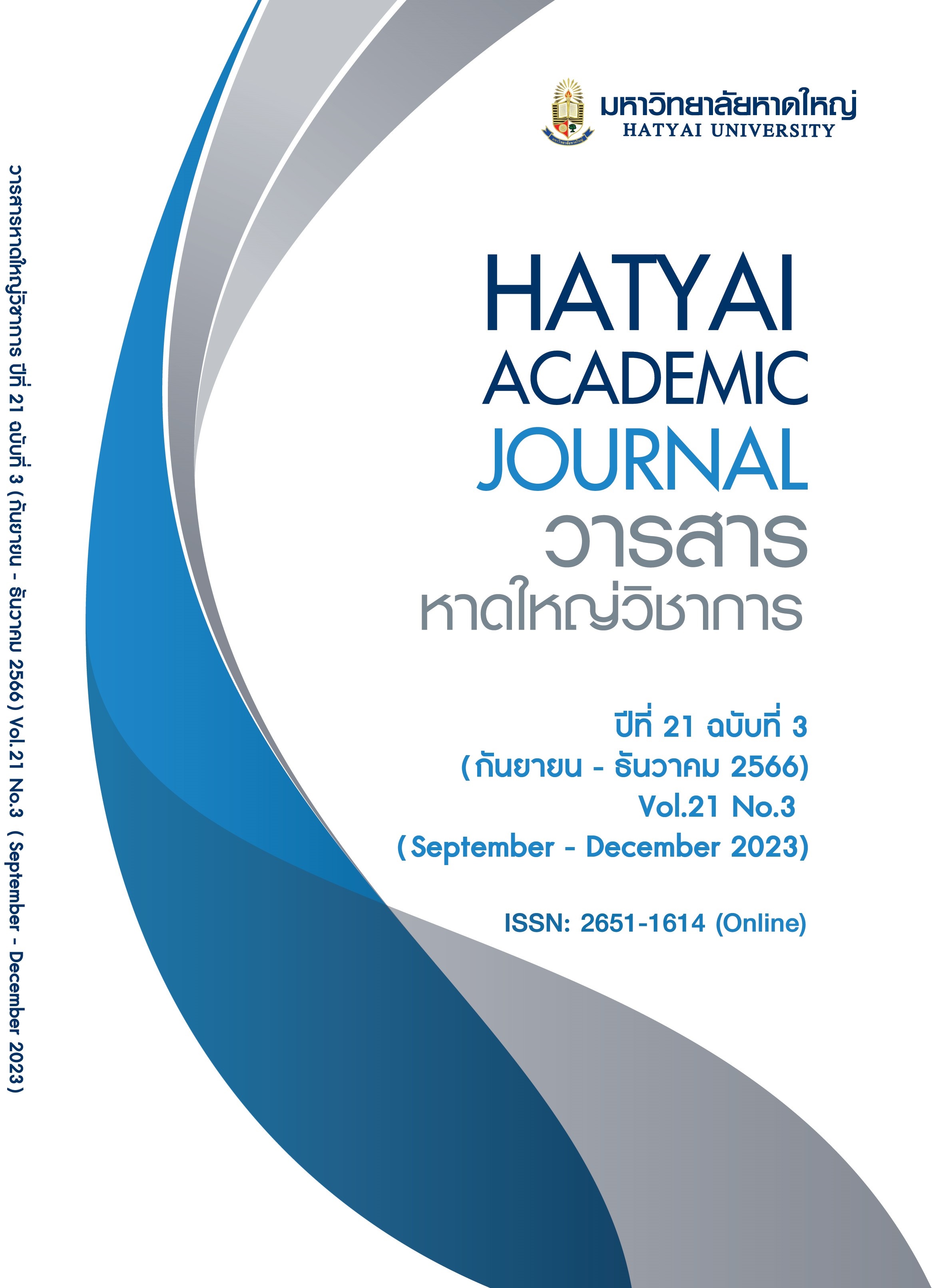Labor Protection Challenges: Maternity Protection
Main Article Content
Abstract
In 2000, the International Labor Organization issued the Maternity Protection Convention No. 183, prompting many countries to prioritize the protection of mothers. The purpose of this academic article is to present the importance of the Maternity Protection Convention. The theory of mother-child ties was discussed, as well as the issue of maternal protection in Thai labor laws and recommendations on maternity protection for female employees in Thai society. The findings revealed that Thailand has laws to protect female workers during pregnancy. However, there is no provision to support child care after maternity leave is terminated. Thus, there should be provisions that give female workers the right to rest during working hours or provide time to breastfeed. The issuance of provisions in respect of work prohibiting a pregnant female employee should cover the period of child-rearing or breastfeeding.
Article Details

This work is licensed under a Creative Commons Attribution-NonCommercial-NoDerivatives 4.0 International License.
All published articles are evaluated by three qualified peer reviewers from various institutions through a double-blind process, where reviewers do not know the authors’ identities and authors do not know the reviewers’ identities. The content and articles in the Hatyai Academic Journal reflect the authors’ views only and are neither the opinions of the editorial board nor the responsibility of Hatyai University. The Editorial Board of the Hatyai Academic Journal allows articles to be reproduced for academic purposes, on the condition that the original source is clearly cited.
References
Abderhalden-Zellweger, A., Probst, I., Politis Mercier, M-P., Danuser, B., & Krief, P. (2021). Maternity protection at work and safety climate: The perceptions of managers and employees in three healthcare institutions in Switzerland. Scandinavian Journal of Work and Organizational Psychology, 6(1), 8, 1-16. doi: 10.16993/sjwop.149
Castetbon, K., Boudet-Berquier, J., & Salanave, B. (2020). Combining breastfeeding and work: Findings from the Epifane population-based birth cohort. BMC Pregnancy Child, 20(1), 1-10. doi: 10.1186/s12884-020-2801-x
Deetha, P. (2018). Rights of female workers in the private sector to breastfeeding breaks and breastfeeding facilities. Thammasat Business Law Journal, 8, 232-241.
Delgado, I., Cabieses, B., Apablaza, M., Castillo, C., Aguilera, X., Matute, I., Najera, M., Pericàs, J. M., & Benach, J. (2019) Evaluation of the effectiveness and equity of the maternity protection reform in Chile from 2000 to 2015. PLOS ONE, 14(9), e0221150. doi: 10.1371/journal.pone.0221150
Department of Labour Protection and Welfare. (2020). Labour Protection Act B.E. 2541 (Amended) and related laws. Bangkok: Riang Sam Graphic Design. [in Thai]
Heebkaew, S., & Sarapong, T. (2018). Protection of female employees’ motherhood rights in Japan: Implications for Thai law. Journal of Mekong Societies, 14(3), 148-175. [in Thai]
ILO. (n.d.(a)). C183 - Maternity Protection Convention, 2000 (No.183). Retrieved from https://www.ilo.org/dyn/normlex/en/f?p=NORMLEXPUB:12100:0::NO::P12100_ILO_CODE:C183
ILO. (n.d.(b)). Ratifications of C183 - Maternity Protection Convention, 2000 (No. 183). Retrieved from https://www.ilo.org/dyn/normlex/en/f?p=1000:11300:0:: NO:11300:P11300_INSTRUMENT_ID:312328
IndustriALL. (2022). Unions in Malaysia win increased maternity leave. Retrieved from https://www.industriall-union.org/unions-in-malaysia-win-increased-maternity-leave
Mahathalaeng, T. (2019). Breastfeeding rights in the workplace: A new legal issue. Sripatum Review of Humanities and Social Sciences, 19(2), 154-165. [in Thai]
Matichon Online. (2022, February 10). The negative birth rate of Thai people: It’s time to choose the country’s future of ‘quantity’ or ‘quality’. Retrieved from https://www.matichon.co.th/lifestyle/social-women/news_3176578 [in Thai]
Mohamad, A. M. N. (2017). Maternity protection: Malaysia Employment Act 1955. Retrieved from https://www.linkedin.com/pulse/maternity-protection-malaysia-employment-act-1955-mohamad
Nation Online. (2019, March 8). More than 500 women workers filed a complaint with the government. Retrieved from https://www.nationtv.tv/news/378765019 [in Thai]
National Statistical Office. (n.d.). Population 15 years and over by age group, desirability to develop and sex whole kingdom: 2014–2021. Retrieved from http://statbbi.nso.go.th/staticreport/page/sector/th/02.aspx
Pakdeewong, P. (2006). Maternal role attainment: Intricating theory to practice. Thai Journal of Nursing Council, 21(3), 12-21. [in Thai]
Rollins, N. C., Bhandari, N., Hajeebhoy, N., Horton, S., Lutter, C. K., Martines, J. C., ... Victora, C. G. (2016). Why invest, and what it will take to improve breastfeeding practices? Lancet, 387(10017), 491-504.
Siriyuwasamai, S. (2018). Legal measures for protecting maternity in Thailand following the International Labour Organization Convention (Master’s thesis). Thammasat University, Bangkok. [in Thai]
Siriyuwasamai, S. (2019). Problems protecting the right to leave the pregnant person during work. Journal of MCU Nakhondhat, 6(7), 3212-3236. [in Thai]
Spitzmueller, C., Wang, Z., Zhang, J., Thomas, C. L., Fisher, G. G., Matthews, R. A., & Strathearn, L. (2016) Got milk? Workplace factors related to breastfeeding among working mothers. Journal of Organizational Behavior, 37(5), 692-718. doi: 10.1002/job.2061
TDRI. (2017). Establishment of a database of labor protection systems of ASEAN member countries. Retrieved from https://tdri.or.th/wp-content/uploads/2018/04/wb134.pdf [in Thai]
Thai Government. (2022, January 12). The cabinet increases the maternity leave days for father 15 days of non-consecutive leave, receives a salary of 50%. Retrieved from https://tdri.or.th/wp-content/uploads/2018/04/wb134.pdf [in Thai]
The World Bank. (2022). Labor force, female (% of total labor force). Retrieved from https://data.worldbank.org/indicator/SL.TLF.TOTL.FE.ZS?end=2021&start=1990&view=chart
Tsai, S. Y. (2013) Impact of a breastfeeding-friendly workplace on an employed mother’s intention to continue breastfeeding after returning to work. Breastfeeding Medicine, 8(2), 210-216. doi: 10.1089/bfm.2012.0119
Victora C. G., Horta B. L., Loret de Mola C., Quevedo, L., Pinheiro, R. T., Gigante, D. P., Gonçalves, H., & Barros, F. C. (2015). Association between breastfeeding and intelligence, educational attainment, and income at 30 years of age: A prospective birth cohort study from Brazil. Lancet Global Health, 3(4), 199-205. doi: 10.1016/S2214-109X(15)70002-1
Wallenborn, J. T., Perera, R. A., Wheeler, D. C., Lu, J., & Masho, S. B. (2018). Workplace support and breastfeeding duration: The mediating effect of breastfeeding intention and self-efficacy. Birth, 46(1), 121-128. doi: 10.1111/birt.12377
WHO & UNICEF. (2020). Global breastfeeding scorecard, 2019. Geneva: WHO & UNICEF.
Yoosuk, Y., Surakarn, A., & Junprasert, T. (2021). The attachment of adolescent mothers to their children: Behavioral science perspective. Warasan Phuettikammasat, 27(1), 61-83. [in Thai]

